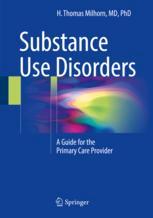

Most ebook files are in PDF format, so you can easily read them using various software such as Foxit Reader or directly on the Google Chrome browser.
Some ebook files are released by publishers in other formats such as .awz, .mobi, .epub, .fb2, etc. You may need to install specific software to read these formats on mobile/PC, such as Calibre.
Please read the tutorial at this link: https://ebookbell.com/faq
We offer FREE conversion to the popular formats you request; however, this may take some time. Therefore, right after payment, please email us, and we will try to provide the service as quickly as possible.
For some exceptional file formats or broken links (if any), please refrain from opening any disputes. Instead, email us first, and we will try to assist within a maximum of 6 hours.
EbookBell Team

4.7
86 reviewsThis practical and timely book provides comprehensive, state-of-the-art guidance on how primary care clinicians can best care for patients with substance use disorders. The book covers the major drugs of abuse, as well as the more recent ones, detailing the biology of various addictions and all dimensions of clinical diagnosis and management. It is organized in four parts: (1) The Basics, (2) Psychoactive Substance Dependencies, (3) Diagnosis, Treatment, Recovery, Relapse, and the Family, and (4) Special Groups. Part I, The Basics, consists of an overview, the various definitions of substance dependence, and the pharmacology of addictive substances. Chapter 1, Overview, is an introductory chapter that covers material common to the entire field of substance dependence. Chapter 2 covers the various definitions of substance dependence, and Chapter 3 reviews the pharmacology of addictive substances. Part II, Psychoactive Substance Dependencies, explains the various drug dependencies—alcohol dependence, sedative-hypnotic dependence, opioid dependence, stimulant dependence, nicotine dependence, cannabis dependence, dissociative dependence, inhalant dependence, hallucinogen dependence, and anabolic steroid dependence. Part III addresses diagnosis, treatment, recovery, relapse, and the family. Part IV, Special Groups, discusses substance dependence in women, adolescents, the elderly, ethnic minority groups, co-occurring disorders, LGBT patients, HIV positive patients, and the impaired physician. In addition to primary care physicians, Substance Use Disorders: A Guide for the Primary Care Provider will serve as an invaluable resource to primary care nurse practitioners and physician assistants, as well as medical students, primary care residents, emergency medicine physicians, ASAM and APA certified addictionists and those studying for certification in those specialties, psychiatrists, psychologists, and alcohol/drug counselors.